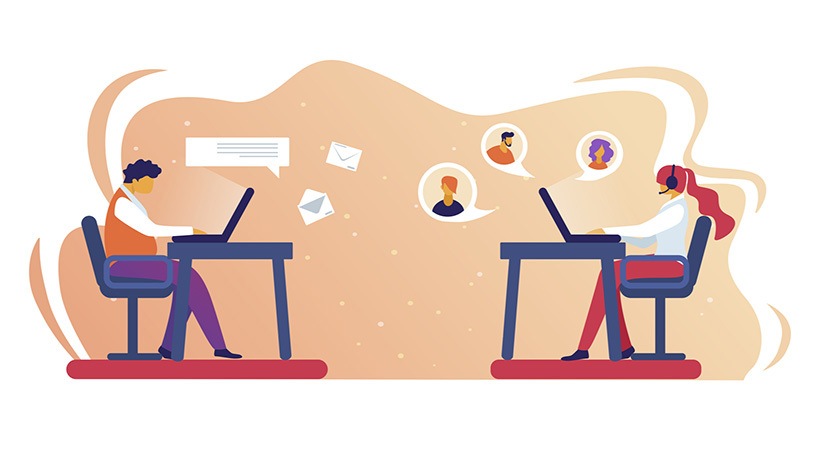Differences Between Online And In-Person Learning
There is no denying that modern technology is rapidly reforming every industry in the world, including the education sector. Not only have classrooms around the world become more modernized with various tech and gadgets to make learning easier and more fun, but technology has also made it possible for young minds to access the global knowledge pool online. Yes, eLearning is big nowadays, and its benefits are being recognized by industry leaders, prominent universities, and students alike. Online learning has its benefits, but is it really better than the traditional classroom or face-to-face methods? The answer surely lies somewhere in the middle, so it’s important that you find the method that motivates you to study and try your hardest in order to achieve your goals. Let’s compare traditional and online learning to help you discover the ideal method for you.
1. Taking Classes In Your Free Time
One of the biggest reasons why aspiring students refrain from enrolling in a course is because they lack the free time to devote their focus and energy amidst all of their other daily commitments. It’s a hectic world out there, and if you’re working full-time and trying to fend for yourself, chances are that your schedule is full all of the time. Come the weekend, you might not have the energy or the willingness to spend half a day in a classroom. And weekdays are out of the question.
Unfortunately, this is one of the major drawbacks of traditional education, as you have to change your schedule and squeeze yet another "chore" in if you are to become a successful student and get your degree [1]. With online learning, though, you can choose to learn in your free time, and thus work the curriculum into your schedule easily, simply because you can access the materials on the web when you see fit.
2. Learning At Your Own Pace
Speaking of easier time management, we have to address another common issue that students experience with traditional learning methods: keeping up with the curriculum. Learning in a group can be engaging and motivational, but the truth is that it also prevents the teacher from devoting adequate resources to each and every student, and so, sooner or later, someone starts falling behind. If this happens to you, you will either have to get a private tutor to help you get up to speed, or you will have to do the work yourself.
Now, you can use online learning to fill those knowledge gaps easily—more on that in a bit—but you can also use it to learn at your own pace, unencumbered by the progress of your peers. An online tutor can devote all their time to your needs, and the materials they give you or the books they recommend you to read will be more than adequate to fill you in on anything you might still be struggling with when you’re revising in your free time.
3. Practice Through Engaging Content
When the time comes to revise what you’ve learned about and practice at home, things can get rather confusing, rather quickly. All of a sudden, you don’t have your teacher there to help you with complex problems, and so you have to google and go with the old trial-and-error route until you solve the problem yourself. While this is a good way to learn something, it’s not particularly efficient.
Say you were learning chemistry and you just got over the Law of Conservation of Mass—matter cannot be created or destroyed, it can only change its form. If you’re trying to balance chemical reactions, you should be working with a balancing chemical equations worksheet that will help you understand the different elements of every equation, and how to balance a chemical equation without losing your mind [2].
Remember, it’s important for the learning and practice materials to be visually stimulating, concise, and engaging in order to help you acquire and retain knowledge in a more efficient way. Online materials tend to be more engaging than textbooks, and the information they provide is typically straightforward and to the point.
4. Sticking With A Course Vs. Dropping Out Early
And speaking of engaging and easily-digestible content, online learning is not only great for learning the toughest subject matters, but it’s also great for motivation. With traditional learning, students tend to have a harder time focusing, and they tend to drop out more frequently for a number of reasons ranging from poor time management to simply not being able to catch up with the group. Needless to say, online learning has no problems with student retention rates.
5. Online Learning Is An Eco-Friendly Option
And finally, consider the fact that online learning is the greener option. The Open University in the UK concluded through extensive research that online learning consumes nearly 90% less energy and produces 85% less CO2 emissions per student than traditional classroom courses. So, if you want to broaden your knowledge, get that degree, and help preserve the natural world around you in the process, then online learning might just be for you.
Wrapping Up
The traditional classroom learning model is, without a doubt, outdated. But that doesn’t mean that it isn’t effective or that it doesn’t have its unique benefits. That said, there is no denying that eLearning provides younger generations with the means to access the global knowledge base easily and that it makes learning more flexible, comfortable, and efficient.
References:
[2] Balancing Chemical Equations Worksheet








